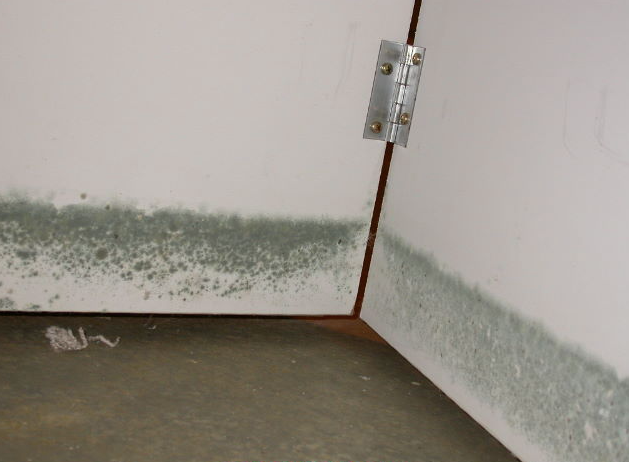Welcome to our Express Home & Office Cleaning
-
 Call: 0800 112 193
Call: 0800 112 193 -
 Email: info@expresshomeandofficecleaning.co.nz
Email: info@expresshomeandofficecleaning.co.nz
 Call: 0800 112 193
Call: 0800 112 193 Email: info@expresshomeandofficecleaning.co.nz
Email: info@expresshomeandofficecleaning.co.nzSince childhood, you’ve been taught that green is healthy. Green vegetables, green landscape, green tea, everything is a green flag. But that’s not the case with mould. This unwanted, moisture-loving fungi is a toxic invader that damages your and your property’s health. Thus, knowing the root cause of green mold infestation and some prevention hacks can help you upkeep a neat and healthy space.
To get rid of the issue, your best bet is to hire expert cleaning services in Auckland. However, if the mould infestation has just begun, you can deal with it on your own. But for that, you have to know it inside out. Let’s have a closer look at the green mould and see what it is.

Green mould is a common fungal species that appears greenish. The most common types of green mould include:
Damp and humid environments are hotbeds where green mould thrives. Places around windows, or bathrooms, kitchens, basements, and attics often attract them. Basically, if there’s condensation or water leaks, there could be green mould. Poor ventilation and organic materials, like wood or drywall, often fuel mould growth. If conditions are right, mould spores can start colonising within 24 to 48 hours.
Let’s check out some visual signs and other clues indicating that this uninvited guest has entered your property.
Green mould usually appears in bright green or dark olive patches. But despite having the green hue, it’s a complete red flag. Depending on moisture levels, this pesky fungus can have powdery or slimy textures.
To spot green mould growth, your nose can act faster than your eyes. Green mould has a musty, earthy smell. Does your room consistently smell damp or unpleasant despite cleaning? If yes, this green fungus is probably taking over. Check behind walls, under carpets, or inside your HVAC ducts. These are the most common spots these unwanted guests hide in.
Green mould exposure can trigger a variety of symptoms. These include:
Follow these best practices to keep mould from infiltrating your property so you don’t end up spending time and money on it later.
This is the most rudimentary mould prevention method. Keeping indoor humidity under 50% is one of those first steps you can take towards mould growth prevention. For bathrooms, kitchens and other moisture-prone areas, use exhaust fans and open windows to dehumidify the area. Or you can just use dehumidifiers for highly-humid areas like basements. Often check for leaks or condensation on windows as well. If you spot it, stopping it right away can prevent future mould growth.
Cleanliness goes a long way in preventing mould growth, especially in high-risk spots like shower tiles and under sinks. Natural solutions like baking soda or commercial mould cleaner can also work on stubborn stains.
Prevention saves you stress and the dollars you’ll end up spending on those surface damage repairs if you don’t get rid of it early. Inspect your home (at least once a year) for signs of water damage, leaks, or poor drainage. Your HVAC systems and gutters can also shelter green mould. Clogged gutters or dirty vents also create a sweet spot for green mould growth. In the end, water intrusion is the biggest culprit behind mould infestation. Stop it, and you won’t have to worry about this pesky issue.
Depending on the intensity, you can take on the mould growth on your own or with a professional’s help.
If that green patch is frail and small, a DIY cleaning session can save you time and dollars. Just make sure you wear protective gear such as gloves, a mask, and goggles. You don’t want to risk your health while cleaning it. You can use DIY cleaners like:
While DIY saves your pocket, large patches of mould should always be left for the pros. Calling those who do this every day can guarantee a safe mould removal and prevent future mould growth.
You now know how to deal with this unwanted visitor in your space. Let’s sum up by discussing the key takeaways.
Greenery is soothing and healthy, unless it comes in the form of mould in your space. Though a common sight, green mould shouldn’t be taken as a trivial property issue. It’s a direct health risk for you and your family.
However, staying ahead of green mould growth isn’t rocket science. You just need to follow the basics like controlling moisture, cleaning regularly, and inspecting frequently for water damage. These no-brainer steps will keep mould from settling in, and if it still encroaches, you have experts to help you.
If you’re looking for a cleaner you can trust to deliver a quality service then call Express Home & Office Cleaning.

Locations: Three Kings, Waterview, Western Springs, Ellerslie, Penrose, Eden Terrace, Glen Innes, Golflands, Grafton, Hobsonville, New Lynn West, Newton, Avondale, Blockhouse Bay, Botany Downs, Browns Bay, Bucklands Beach, Burswood, St Heliers, Stonefields, Westmere, Wiri, North Shore Auckland, South Auckland, Epsom, Freemans Bay, Grey Lynn, Herne Bay, Northpark, Otahuhu, Pahurehure Inlet, Ponsonby, Pukekohe, Remuera, Sandringham, Waiuku, Manurewa, East Auckland, West Auckland, Farm Cove, Glen Eden, Kingsland, Lynfield, Mangere Bridge, Mt Albert, Pakuranga, Papakura, Papatoetoe, Point Chevalier, East Tamaki
© 2025 Express Home & Office Cleaning NZ